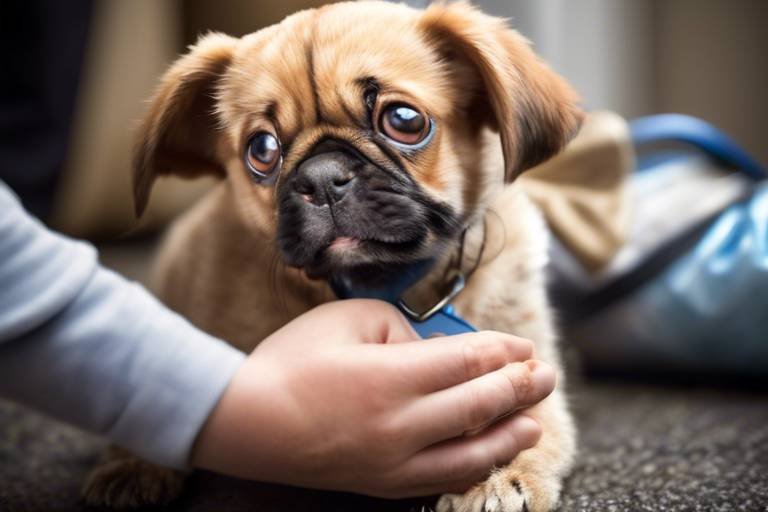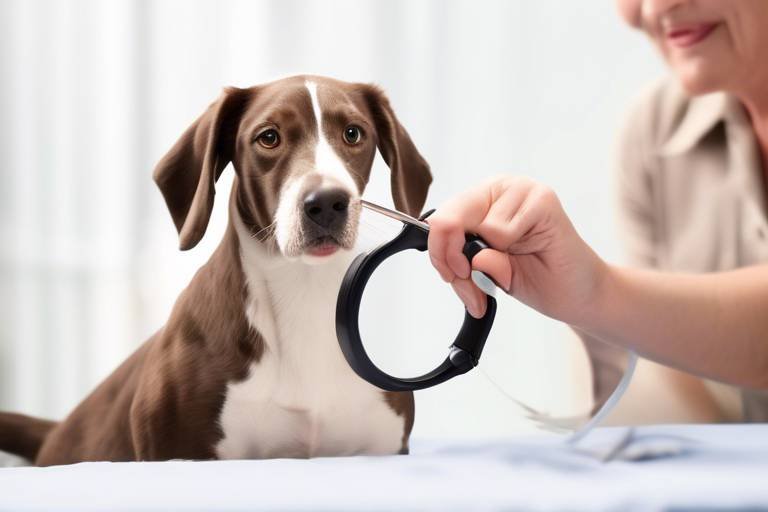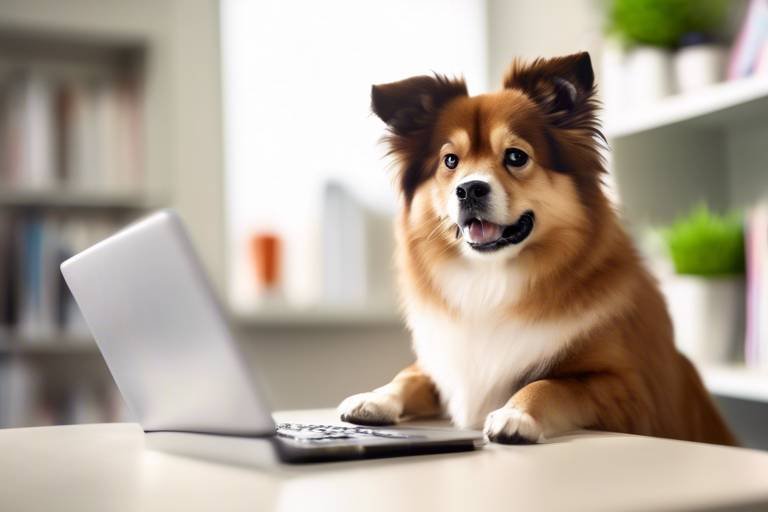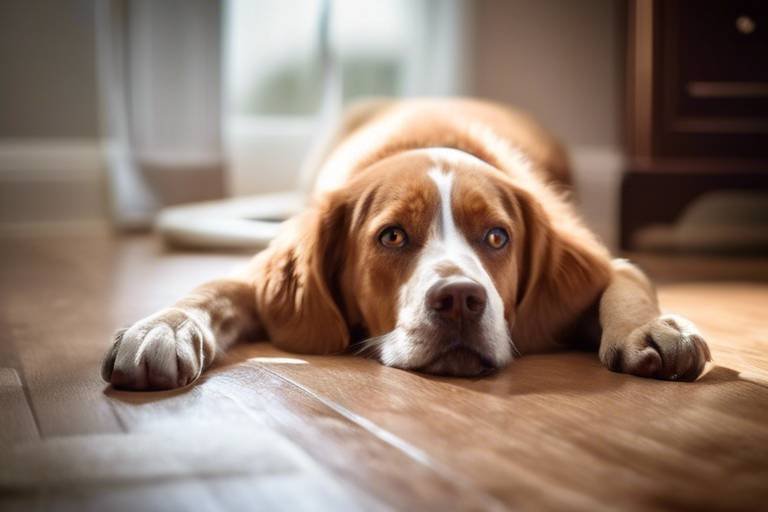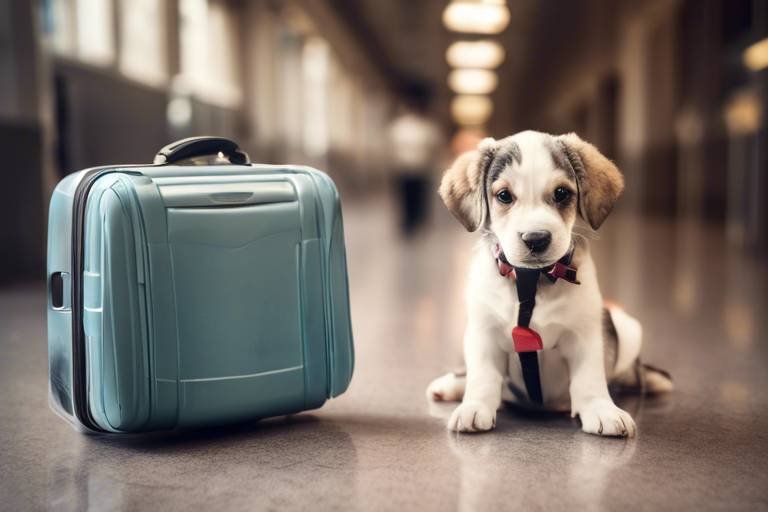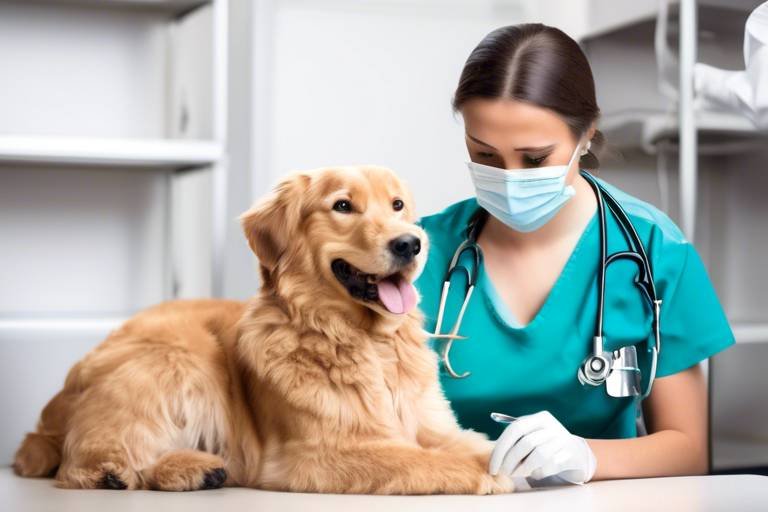Tips for Keeping Your Pet Safe from Household Dangers
As a pet owner, you want to provide your furry friends with a safe and loving environment. However, many household items that we often overlook can pose serious dangers to our pets. From toxic plants to hazardous chemicals, understanding these risks is the first step in safeguarding your beloved companions. In this article, we will explore essential strategies to protect your pets from common household hazards, ensuring their safety and well-being in your home.
To keep your pets safe, it’s crucial to be aware of the typical dangers lurking in your home. Some common household hazards include:
- Toxic Plants: Many popular houseplants, such as lilies and philodendrons, can be toxic to pets if ingested.
- Chemicals: Cleaning supplies, antifreeze, and certain human foods can be poisonous to pets.
- Choking Hazards: Small items like coins, rubber bands, and toys can easily become choking hazards for curious pets.
By identifying these hazards, you can take proactive measures to eliminate or secure them, creating a safer living space for your pets.
Properly storing household chemicals and cleaning supplies can significantly reduce the risk of poisoning. Here are some effective strategies:
- Store all chemicals in high cabinets or locked storage areas that are out of reach of pets.
- Use childproof containers for hazardous substances to prevent accidental access.
- Clearly label all chemicals and keep them in their original containers to avoid confusion.
By taking these steps, you can help ensure that your curious pets won't accidentally ingest something harmful.
Implementing childproofing techniques not only protects children but also creates a safer environment for pets. Consider these practical tips:
- Install safety latches on cabinets and drawers to prevent pets from accessing hazardous items.
- Use corner guards to cover sharp edges on furniture that could injure a playful pet.
- Secure heavy furniture to the wall to prevent tipping if a pet climbs or jumps on it.
These simple adjustments can greatly enhance your pet's safety at home.
Installing safety latches on cabinets and drawers can effectively prevent pets from accessing hazardous items. This simple yet effective step can make a world of difference in ensuring your pet's safety. Imagine your pet’s curiosity leading them to a cabinet filled with cleaning supplies—safety latches act as a barrier, keeping them safe from potential harm.
Pets are often attracted to dangling cords, which can pose serious risks, including chewing and potential electrocution. To minimize these dangers, consider the following:
- Use cord covers or conduits to shield electrical cords from curious teeth.
- Organize cords with cable ties to reduce clutter and eliminate tempting dangling sections.
- Keep furniture strategically placed to block access to cords when possible.
By securing electrical cords, you not only protect your pets but also enhance the overall safety of your home.
Outdoor spaces can also be hazardous for pets. Understanding which plants are toxic and how to create a safe garden environment is essential for pet owners. Some common toxic plants include:
- Azaleas
- Oleander
- Foxglove
By eliminating these plants from your garden or ensuring that your pets cannot access them, you can create a safe haven for your furry friends to enjoy the outdoors.
Designating a specific area in your home for your pets can help minimize their exposure to dangers. This space should be comfortable, secure, and filled with their favorite toys. Consider these tips for creating a safe space:
- Choose a quiet corner of your home, away from high-traffic areas.
- Include their bed, toys, and water bowl to make it inviting.
- Ensure that the area is free from any potential hazards, such as small objects or cords.
By creating a safe environment, you can give your pets a cozy retreat where they can relax without worry.
Selecting the right furniture can reduce risks for pets. Opt for durable materials that can withstand scratches and spills. For instance, leather or microfiber are often easier to clean and maintain compared to delicate fabrics. Think of your home as a fortress—by choosing pet-friendly furnishings, you’re reinforcing the walls of safety for your furry companions.
Setting clear boundaries for your pets can prevent them from accessing dangerous areas. Training your pets to recognize these boundaries is key. Use positive reinforcement techniques, such as treats and praise, to encourage them to stay within designated spaces. This not only keeps them safe but also helps them feel secure in their environment.
Routine veterinary visits are essential for monitoring your pet's health and identifying any potential issues early. Regular check-ups can help catch problems before they become serious, ensuring your pets remain healthy and happy. Think of it as a health insurance policy for your furry friend—it’s better to be proactive than reactive when it comes to their well-being.
Q: What are some common household items that are toxic to pets?
A: Common toxic items include certain plants (like lilies), cleaning products, chocolate, and human medications.
Q: How can I pet-proof my home on a budget?
A: Use items you already have, like boxes or old furniture, to create barriers. You can also repurpose household items to cover cords and secure cabinets.
Q: What should I do if I think my pet has ingested something harmful?
A: Contact your veterinarian or an emergency animal clinic immediately. It's always better to err on the side of caution.
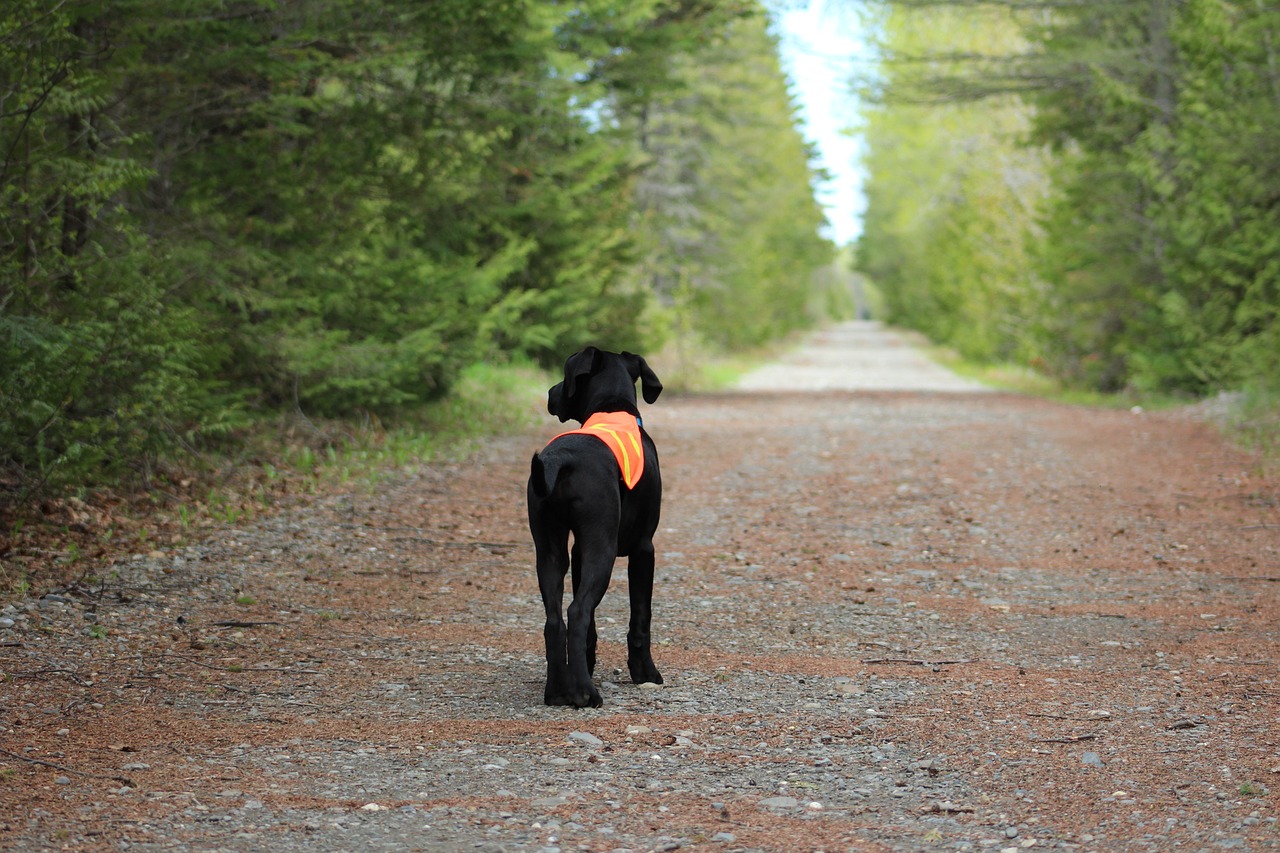
Identifying Common Household Hazards
When it comes to keeping your furry friends safe, the first step is to identify the common hazards lurking in your home. Many pet owners may not realize that their cozy living spaces can harbor dangers that could lead to accidents or health issues for their beloved pets. From toxic plants to hazardous chemicals, being aware of these risks is crucial. Let’s dive into some of the most prevalent household dangers that could pose a threat to your pets.
One of the most frequent hazards found in homes is toxic plants. While greenery can enhance the beauty of your living space, certain plants can be extremely harmful if ingested by pets. For instance, plants such as lilies, azaleas, and poinsettias are known to be toxic to dogs and cats. It's essential to familiarize yourself with the plants in your home and garden. If you're unsure, consider consulting a list of pet-safe plants to ensure your indoor jungle is a safe haven.
Another significant risk comes from household chemicals. Cleaning supplies, pesticides, and even some personal care products can be dangerous if ingested or inhaled by pets. For example, products containing bleach or ammonia can lead to severe respiratory issues or poisoning. It’s vital to read labels carefully and store these items in secure cabinets that are out of reach of curious paws.
Choking hazards are also prevalent in many households. Items such as small toys, rubber bands, and even food scraps can pose serious choking risks to pets. Regularly inspecting your living areas for such items can help prevent accidents. Additionally, be cautious with food items; certain foods like grapes, chocolate, and onions are not only choking hazards but can also be toxic.
Here’s a quick reference table summarizing some common household hazards:
| Hazard Type | Examples | Potential Risks |
|---|---|---|
| Toxic Plants | Lilies, Azaleas, Poinsettias | Vomiting, Diarrhea, Organ Failure |
| Chemicals | Bleach, Ammonia, Pesticides | Respiratory Issues, Poisoning |
| Choking Hazards | Small Toys, Food Scraps | Choking, Intestinal Blockage |
In conclusion, being proactive about identifying these common household hazards is the first step in ensuring your pet's safety. By taking the time to understand what could be harmful in your environment, you can create a safer space for your furry companions. Remember, a little awareness goes a long way when it comes to protecting our beloved pets!

Safe Storage of Chemicals
When it comes to keeping our beloved pets safe, one of the most crucial aspects to consider is the storage of household chemicals. Many pet owners might not realize that common cleaning supplies, gardening products, and even certain medications can pose serious risks to our furry friends. Imagine a curious cat or an adventurous dog stumbling upon a bottle of bleach or a container of anti-freeze; the consequences can be dire! Therefore, understanding how to properly store these substances is essential.
First and foremost, always keep chemicals in their original containers. This ensures that the labels, which contain important safety information, remain intact. It's all too easy to mistake a bottle of cleaning solution for a harmless drink, especially if it's stored in a similar-looking container. By using the original packaging, you not only keep your products organized but also maintain clear warnings about their contents.
Next, consider the height at which you store these items. It’s best to place hazardous materials on high shelves or in cabinets that are out of reach of pets. If you have cabinets that are easily accessible to your pets, investing in childproof locks or safety latches can be a game-changer. This simple preventive measure can keep your pets from accidentally getting into dangerous substances.
Additionally, it’s wise to create a dedicated storage space for chemicals. This area should be well-ventilated and away from your pet's usual hangout spots. If you have a garage or a shed, consider using those spaces for storing items like fertilizers, pesticides, and automotive products. Just be sure to keep those doors securely closed!
Moreover, always dispose of unused or expired chemicals properly. Leaving them around not only increases the risk of accidental ingestion but can also create a cluttered environment. Many communities have designated days for hazardous waste disposal, so take advantage of those opportunities to keep your home safe.
To summarize, here are some key points to remember about safe storage of chemicals:
- Keep chemicals in their original containers to avoid confusion.
- Store hazardous items on high shelves or in locked cabinets.
- Create a dedicated storage area away from your pet's reach.
- Dispose of unused or expired chemicals responsibly.
By taking these precautions, you can significantly reduce the risk of accidental poisoning and ensure that your home remains a safe haven for your pets. Remember, a little vigilance goes a long way in protecting your furry family members from household dangers!
Q: What types of household chemicals are most dangerous to pets?
A: Some of the most dangerous household chemicals include cleaning products (like bleach and ammonia), antifreeze, certain types of paint, and pesticides. Always read labels and keep these items out of reach.
Q: How can I tell if my pet has ingested a toxic substance?
A: Signs of poisoning can vary but may include vomiting, diarrhea, lethargy, seizures, or difficulty breathing. If you suspect your pet has ingested something harmful, contact your veterinarian immediately.
Q: Are there pet-safe alternatives to common household chemicals?
A: Yes! There are many pet-safe cleaning products available on the market. Additionally, natural alternatives like vinegar and baking soda can be effective for many cleaning tasks without posing a risk to your pets.
Childproofing Your Home
When it comes to ensuring the safety of both children and pets, is a crucial step that cannot be overlooked. Think of it as creating a fortress where your furry friends and little ones can roam freely without the lurking dangers of household hazards. Just like you wouldn’t leave a toddler unattended in a room full of sharp objects, the same principle applies to your pets. They are naturally curious creatures, and that curiosity can sometimes lead them into trouble. So, how do we create a safe haven for them?
First off, it’s essential to recognize that many of the safety measures you put in place for children will also benefit your pets. For instance, securing heavy furniture to the wall is not just a precaution against a child pulling it over; it also prevents a pet from climbing or knocking it over, which could lead to injury. Think of your home as a playground—it should be fun and safe, not a place filled with potential hazards.
One effective strategy is to install safety latches on cabinets and drawers. These latches are designed to keep curious little hands at bay, but they work just as well for pets. Imagine your dog or cat discovering a cabinet filled with cleaning supplies or other hazardous materials; it could be a recipe for disaster. By securing these areas, you create a barrier that keeps your pets safe from harmful substances.
Another area to focus on is the electrical cords that often dangle enticingly from furniture. Pets, especially puppies and kittens, are notorious for chewing on anything that dangles or moves. To prevent potential electrocution or choking hazards, it’s wise to secure those cords using cord covers or clips. Not only does this protect your pets, but it also keeps your home looking neat and tidy.
In addition to these measures, consider creating a designated play area for your pets, away from potential hazards. This space can be filled with their toys and comfortable bedding, giving them a safe retreat where they can relax and play without worry. It’s like having a cozy nook where they can feel secure while still being part of the family’s daily activities.
Ultimately, childproofing your home is about being proactive. It’s about anticipating the needs of your pets and children and taking steps to mitigate risks. By implementing these strategies, you’ll not only create a safer environment but also enjoy peace of mind knowing that your loved ones are protected. So, roll up your sleeves, take a look around your home, and start making those necessary adjustments. Your pets and kids will thank you for it!
- What are the most common household hazards for pets? Common hazards include toxic plants, cleaning supplies, electrical cords, and small objects that could be swallowed.
- How can I tell if a plant is toxic to my pet? Research the plants in your home and check resources like the ASPCA's list of toxic and non-toxic plants.
- Do I need to childproof my home if I only have pets? Yes, many childproofing measures also protect pets from potential dangers.
- How often should I check for household hazards? It's a good practice to routinely inspect your home, especially after bringing in new items or making changes to your living space.
Using Safety Latches
When it comes to pet safety, one of the simplest yet most effective solutions is the installation of safety latches on cabinets and drawers. These handy devices are designed to keep curious paws and snouts away from hazardous items that could pose a serious risk to your furry friends. Imagine your pet as an adventurous explorer, always on the lookout for new discoveries. Just like you would childproof your home for a toddler, using safety latches is an essential step in protecting your pets from potential dangers lurking in your cupboards.
Many pet owners underestimate the importance of securing their storage spaces. Household cleaners, medications, and even some food items can be extremely toxic to pets. For example, did you know that common household items like chocolate, grapes, and certain plants can be lethal if ingested? By installing safety latches, you create a barrier that prevents your pets from accessing these dangerous substances. It's like putting a "Do Not Enter" sign on a hazardous zone in your home.
There are various types of safety latches available on the market, each designed to suit different cabinet styles and pet sizes. Here are a few options to consider:
- Magnetic Latches: These latches use a magnetic lock that is difficult for pets to open. They are ideal for high cabinets.
- Sliding Latches: Perfect for drawers, these latches slide into place and can be easily installed without tools.
- Hook and Eye Latches: Simple yet effective, these latches can be used on cabinets and doors, creating a secure closure.
Installing safety latches is a straightforward DIY project that requires minimal tools. Most latches come with easy-to-follow instructions and can be installed in just a few minutes. Make sure to place them at a height that is inaccessible to your pets, ensuring that they can’t reach or manipulate them. This small investment of time and money can save you from the heartache of a pet emergency.
Remember, pet safety is not just about preventing access to harmful substances; it's also about fostering a safe environment for your beloved companions. By taking proactive measures like using safety latches, you're not only protecting your pets but also providing peace of mind for yourself. After all, a safe home is a happy home!
1. What types of items should I secure with safety latches?
It's best to secure cabinets and drawers that contain cleaning supplies, medications, and any potentially harmful items such as sharp tools or small objects that could be choking hazards.
2. Can I install safety latches on all types of cabinets?
Yes! Most safety latches are designed to be versatile and can be installed on various cabinet styles, including traditional, modern, and even sliding doors.
3. Are safety latches easy to install?
Absolutely! Most latches come with installation instructions and require minimal tools, making them a quick and easy solution for pet-proofing your home.
4. How can I ensure my pets don’t learn to open safety latches?
While most pets won’t be able to manipulate safety latches, it’s important to observe their behavior. If you notice your pet trying to open them, consider additional training or using more advanced latches.
Securing Electrical Cords
When it comes to keeping your beloved pets safe at home, one often-overlooked hazard is electrical cords. These seemingly innocuous items can pose serious risks, especially for curious pets who love to chew on anything that dangles. Imagine your furry friend tugging at a cord, and suddenly, they’re facing a shocking situation. It’s a nightmare scenario for any pet owner, but with a few proactive measures, you can significantly reduce this risk.
First and foremost, it’s essential to identify the cords that are most likely to attract your pets. Think about the areas in your home where you have electronic devices – living rooms, bedrooms, and home offices are common culprits. Once you’ve pinpointed these zones, you can take action. One effective strategy is to use cord covers or tubing. These protective sleeves can be found at most hardware stores and are designed to encase cords, making them less accessible and less tempting for your pets to chew on.
In addition to cord covers, consider using cord clips or adhesive hooks to secure cords to walls or furniture. This not only keeps them out of reach but also helps to prevent any tripping hazards for both pets and humans. You can also try to rearrange your furniture to keep cords hidden behind pieces that your pets can’t easily access. If you have a particularly adventurous pet, it may be worth investing in furniture that has built-in cord management systems.
Let’s not forget about the importance of training. Teaching your pets to understand that chewing on cords is a no-go can be incredibly effective. Use positive reinforcement techniques to reward them when they ignore cords or play with their toys instead. It’s all about redirecting their attention. After all, a well-trained pet is a safer pet!
Lastly, always keep an eye on your pets when they’re in areas with exposed cords. Regularly inspect cords for any signs of wear and tear, as damaged cords can pose an even greater risk. If you notice any fraying or exposed wires, it’s best to replace them immediately. Remember, a little vigilance goes a long way in ensuring your home remains a safe haven for your pets.
By taking these simple yet effective steps, you can create a safer environment for your furry companions and enjoy peace of mind knowing that you’ve minimized potential hazards in your home.
- What can I use to cover electrical cords? You can use cord covers or tubing, which are available at hardware stores, to protect the cords from your pets.
- How can I train my pet to avoid chewing on cords? Use positive reinforcement techniques to reward your pet when they ignore cords and redirect their attention to their toys.
- Are there specific types of cords that are more dangerous? Generally, any cord that is exposed and within reach of pets can be dangerous, especially if it’s frayed or damaged.
- How often should I check my electrical cords for damage? It’s a good idea to inspect your cords regularly, at least once a month, to ensure they are in good condition.
Pet-Proofing Your Garden
When it comes to our furry companions, the garden can be a paradise or a perilous playground. is essential to ensure your pets can enjoy the outdoors without encountering dangerous plants or hazardous items. First and foremost, it’s vital to familiarize yourself with toxic plants that could pose serious health risks to your pets. For instance, plants like oleander, azalea, and lilies are not just pretty to look at; they can be deadly if ingested. Take a moment to survey your garden and consider replacing these harmful plants with pet-friendly alternatives.
Creating a safe outdoor environment involves more than just plant selection. You should also consider the layout of your garden. Ensure that there are no hidden dangers lurking around. For example, garden tools, fertilizers, and pesticides should be stored securely out of reach. Not only can these items be harmful if ingested, but they can also cause injuries if your pet decides to play with them. A good rule of thumb is to keep all gardening supplies locked away in a shed or garage, much like you would with cleaning supplies indoors.
Additionally, consider creating a designated pet area within your garden. This space can be filled with pet-friendly plants and features like a shaded spot or a small water fountain. By giving your pets a specific area to play, you can monitor their activities more easily and reduce the chances of them wandering into hazardous zones. It’s like giving them their own little kingdom, where they can frolic freely without worry!
Another important aspect of pet-proofing your garden is to install barriers. Fencing can be a great way to keep your pets contained and safe from wandering off or getting into trouble. Ensure that the fence is high enough and buried deep enough to prevent digging. If you have a smaller pet, consider using a smaller mesh fencing that prevents them from slipping through. Remember, a little extra effort in securing your garden can go a long way in keeping your pets safe.
Lastly, don’t forget about the dangers that can come from outdoor chemicals. If you’re using fertilizers or pesticides, opt for pet-safe products whenever possible. It’s crucial to read labels carefully and follow all safety instructions. After all, your garden should be a sanctuary for your pets, not a source of harm. By taking these precautions, you can create a safe and enjoyable garden environment where your pets can thrive and explore without fear.
- What plants are safe for pets? Some pet-friendly options include sunflowers, marigolds, and spider plants. Always do your research before planting!
- How can I keep my pets from digging in the garden? You can train your pets to stay away from certain areas using positive reinforcement techniques or by creating designated digging spots for them.
- Is it safe to use mulch in my garden? Some types of mulch, like cocoa mulch, can be toxic to pets. Opt for pet-safe alternatives like cedar or pine mulch.

Creating a Safe Space for Pets
Creating a safe space for your pets is not just a good idea; it’s a necessity for any responsible pet owner. Imagine your home as a sanctuary where your furry friends can roam freely without the constant worry of encountering hidden dangers. By designating a specific area for your pets, you can significantly minimize their exposure to potential hazards while providing them with a cozy retreat. This space should be comfortable, inviting, and above all, secure. Think of it as their personal haven, a place where they can relax and feel safe.
When setting up this safe space, consider the layout and the materials you use. Opt for pet-friendly furnishings that can withstand wear and tear, as well as any accidental spills or messes. For instance, choosing sofas and chairs made from durable fabrics can save you from countless cleaning woes. Furthermore, avoid items that can easily tip over or break, as these can pose serious risks. A sturdy, well-constructed pet bed can serve as a perfect centerpiece for their special area, giving them a spot to curl up and feel secure.
Establishing boundaries is another crucial aspect of creating a safe environment. Just like children, pets need to understand where they can and cannot go. Training your pets to stay within designated areas not only protects them from potential dangers but also helps maintain order in your home. Consider using baby gates or pet barriers to keep them out of hazardous zones, such as kitchens or laundry rooms where they might encounter toxic substances or sharp objects.
In addition to physical boundaries, it's essential to make the space inviting. Add some of their favorite toys, blankets, and even a scratching post or climbing structure if you have cats. This not only makes the area feel like home but also keeps them entertained and engaged. A well-designed space can prevent boredom, which often leads to mischief. Remember, a happy pet is a safe pet!
Finally, don't forget to include a designated bathroom area if your pets are not allowed outside frequently. This can be a simple litter box for cats or a potty pad for dogs. Keeping this area clean and well-maintained will ensure that your pets feel comfortable and secure in their designated space.
- What materials are considered pet-friendly? Look for durable fabrics like microfiber or leather that can withstand scratches and spills.
- How can I train my pet to stay within their safe space? Use positive reinforcement techniques, rewarding them when they stay in their designated area.
- Is it necessary to have a designated space for my pet? Yes, it helps create a secure environment and reduces the risk of accidents or exposure to dangers.
Choosing Pet-Friendly Furnishings
When it comes to creating a safe haven for your furry companions, the choice of furnishings plays a crucial role. You might be wondering, "How can I make my home both stylish and safe for my pets?" Well, the secret lies in selecting materials and designs that withstand the wear and tear of pet life while also being non-toxic and easy to clean. Think of your furniture as a fortress; it should be sturdy enough to handle the playful antics of your pets while also being a welcoming space for them to relax.
One of the first things to consider is the material of your furniture. Opt for fabrics that are durable and resistant to scratches and stains. For instance, leather and microfiber are excellent choices as they can withstand a bit of roughhousing and are easier to wipe clean compared to traditional upholstery. Imagine a couch that looks pristine even after a playful romp—sounds dreamy, right? Additionally, avoid materials that can easily fray or snag, as these can pose choking hazards for your curious pets.
Another important factor is the design of your furnishings. Low-profile furniture is ideal, as it reduces the risk of your pet jumping and falling from heights. Consider investing in pet-friendly furniture that has rounded edges, which can help prevent injuries during those spirited play sessions. Also, think about the color of your fabrics. While lighter colors might seem appealing, they can show stains and pet hair more easily. Darker or patterned fabrics not only hide imperfections better but also add a touch of style to your home.
Don't forget about accessibility. Your pets need to feel comfortable and included in your living space. Look for furniture that allows them to hop up and down easily. Pet stairs or ramps can be great additions, especially for older pets who might struggle with jumping. Additionally, consider creating cozy spots for your pets. A designated pet bed or a soft blanket on the couch can provide them with a sense of security while keeping your furnishings safe from scratches and fur.
Lastly, remember to check for any toxic materials in your furniture. Some treatments and finishes can be harmful to pets, so always look for non-toxic options. When shopping, don’t hesitate to ask manufacturers about the safety of their materials. You want to ensure that your home is a sanctuary, not just for you but for your beloved pets as well.
In summary, choosing pet-friendly furnishings is about balancing style, durability, and safety. By being mindful of materials, design, and accessibility, you can create a beautiful and secure environment for your furry friends. After all, a happy pet means a happy home!
- What materials are best for pet-friendly furniture? Durable materials like leather, microfiber, and synthetic fabrics are excellent choices due to their resistance to stains and scratches.
- How can I minimize pet hair on my furniture? Opt for furniture with darker colors or patterns that can disguise hair, and consider using slipcovers that can be easily washed.
- Are there any specific designs I should avoid? Avoid high-backed furniture and pieces with sharp edges that could pose a risk to your pets.
- Can I use regular cleaning products on pet-friendly furniture? Always check that your cleaning products are non-toxic and safe for pets to avoid any health risks.
Establishing Boundaries
Establishing boundaries for your pets is not just about keeping them safe; it's about creating a harmonious living environment for both you and your furry friends. Think of it as setting up a miniature kingdom where your pets can roam freely without stumbling into danger. By defining specific areas where your pets can and cannot go, you minimize the risk of accidents and ensure that they feel secure in their designated space. But how do you go about this? Let’s dive into some effective strategies!
First and foremost, positive reinforcement is key. Instead of simply telling your pet "no," reward them when they stay within their boundaries. This could be with treats, praise, or playtime. For example, if your dog stays in the living room while you cook, shower them with affection and maybe a tasty snack. This encourages them to understand that staying in a certain area brings good things, making it much more likely they’ll stick to the rules.
Another effective method is to use baby gates or pet barriers. These can serve as physical reminders of where your pets are allowed to roam. Just like a fence keeps livestock in place, these barriers can help manage your pet’s movement throughout the house. It's crucial to choose gates that are sturdy and tall enough to prevent your pet from jumping over or pushing through. For instance, if you have a small dog, a gate that stands 30 inches high might be perfect, while larger breeds might need something closer to 40 inches.
Additionally, consider using designated pet zones in your home. Create a cozy corner with a bed, toys, and food where your pet can feel at home. This not only gives them a sense of ownership over their space but also keeps them away from potentially dangerous areas, like the kitchen or laundry room. Make it inviting with their favorite blanket or a few toys, and watch as they gravitate towards their safe haven.
Lastly, training plays a pivotal role in establishing boundaries. Teaching your pet basic commands like "stay," "leave it," or "go to your spot" can be incredibly beneficial. These commands act as verbal cues that reinforce the boundaries you've set. For example, when you say "stay," your pet learns to remain in place until given the next command, significantly reducing the chances of them wandering into hazardous areas.
In summary, establishing boundaries for your pets is all about creating a safe and enjoyable living environment. With positive reinforcement, physical barriers, designated zones, and effective training, you can ensure your furry companions understand their limits while feeling loved and secure. Remember, a little effort goes a long way in keeping your pets safe and happy!
- Why is it important to establish boundaries for my pet? Establishing boundaries helps prevent accidents and keeps your pet safe from household dangers.
- What are some effective methods to train my pet to stay within boundaries? Positive reinforcement, verbal commands, and physical barriers are all effective methods.
- How can I create a designated pet zone in my home? Choose a quiet corner, add a comfortable bed, toys, and food, and make it inviting for your pet.
- Can I use baby gates for all types of pets? Yes, but make sure to choose gates that are appropriate for your pet's size and jumping ability.

Regular Health Check-Ups
When it comes to ensuring the safety and well-being of our beloved pets, are absolutely essential. Just like we visit the doctor for routine examinations, our furry friends need the same level of care to catch any potential issues before they escalate. Imagine this: a small health problem that could have been easily treated suddenly becomes a serious concern because it went unnoticed. That's why keeping up with veterinary appointments is not just a good idea—it's a vital part of responsible pet ownership.
During these check-ups, veterinarians conduct a thorough examination that includes checking your pet's weight, coat condition, and overall health. They may also perform blood tests to screen for various conditions and ensure your pet is up to date on vaccinations. Prevention is better than cure, and these visits are the first line of defense against diseases that could be lurking in the shadows.
Additionally, regular visits allow you to discuss any behavioral changes or concerns with your vet. For instance, if your pet has suddenly become lethargic or is exhibiting strange behaviors, these could be signs of underlying health issues. It's crucial to address these concerns early on. Think of your veterinarian as your pet's health detective, always on the lookout for clues that could indicate a problem.
Now, you might wonder how often your pet should see the vet. Generally, puppies and kittens require more frequent visits, often every few weeks until they are about four months old. After that, adult pets should typically have check-ups at least once a year. However, senior pets or those with pre-existing conditions may need more frequent evaluations. It's important to tailor the schedule to your pet's specific needs.
To give you a clearer picture, here’s a simple
| Pet Age | Recommended Check-Up Frequency |
|---|---|
| Puppies/Kittens (0-1 year) | Every 3-4 weeks |
| Adult Pets (1-7 years) | Once a year |
| Senior Pets (7+ years) | Every 6 months |
In addition to physical exams, these visits are also an excellent opportunity to discuss preventive care measures, such as flea and tick prevention, dental care, and diet. Just like we need a balanced diet to stay healthy, our pets do too! A well-balanced diet tailored to their specific needs can help maintain their health and prevent obesity, which is a growing concern among pets today.
In conclusion, regular health check-ups are a cornerstone of keeping your pet safe from household dangers and health issues. By staying proactive and attentive to your pet's health, you're not just ensuring their safety in the home; you're enhancing their quality of life. So, grab that calendar and schedule those vet visits. Your furry friend deserves it!
- How often should I take my pet to the vet? It depends on their age and health status. Generally, puppies and kittens need more frequent visits, while adult pets should go at least once a year.
- What should I expect during a vet visit? Expect a thorough examination, vaccinations, and discussions about your pet's health and behavior.
- Are health check-ups expensive? Costs can vary, but investing in regular check-ups can save you money in the long run by preventing serious health issues.
Frequently Asked Questions
- What are some common household hazards for pets?
Pets can encounter various dangers at home, including toxic plants, household chemicals, small objects that can be swallowed, and unsecured electrical cords. It's essential to identify these hazards to ensure your pet's safety.
- How can I safely store chemicals away from my pets?
To keep your pets safe, store all cleaning supplies and chemicals in high cabinets or locked storage areas. Use childproof latches to secure cabinets and always keep products in their original containers to avoid accidental ingestion.
- What are effective childproofing techniques for pet safety?
Childproofing your home can significantly benefit pets as well. Install safety latches on cabinets, secure cords with cord organizers, and use gates to restrict access to hazardous areas. This creates a safer environment for all family members.
- How can I pet-proof my garden?
To create a safe garden for your pets, research which plants are toxic and remove them from your yard. Additionally, consider fencing off areas that contain potentially harmful chemicals or tools, ensuring your pets have a safe space to play.
- What should I consider when choosing pet-friendly furnishings?
When selecting furniture, look for durable, easy-to-clean materials that can withstand scratches and spills. Avoid items with sharp edges or small parts that can be chewed off, ensuring a safer environment for your furry friends.
- How can I establish boundaries for my pets?
Training your pets to understand boundaries is crucial for their safety. Use positive reinforcement techniques to teach them which areas are off-limits, and consider using baby gates or barriers to physically restrict access to dangerous zones.
- Why are regular health check-ups important for pets?
Routine veterinary visits are vital for monitoring your pet's health and catching potential issues early. Regular check-ups can help prevent serious health problems, ensuring your pet remains safe and healthy in your home.



